Your cart is currently empty!
It’s February and that means Valentine’s Day is on its way! Valentine’s Day is all about love, treats, pampering, chocolates, and flowers of course!
Flowers can brighten up any room, but did you know they can work wonders on our health as well? Flowers have long been a part of the Chinese healing tradition and continue to be used in Chinese herbal formulas today.
Let’s learn more about the use of flowers in herbal medicine and get a closer look at some of Chinese medicine’s most beloved flowers.
The Use of Flowers in Chinese Medicine
Even if you don’t think you’ve used flowers as “medicine” before, it’s likely you have! Have you ever sipped chamomile tea, taken a cough drop with echinacea, used a facial cream with calendula, or had a bath with soothing lavender essential oil? These are all flowers at work helping you relax, strengthen, and soothe.
Chinese medicine has used flowers as herbal medicine for millennia. Like other herbs, flowers can be used in teas, decoctions, pills, powders, salves, and tinctures. Because of their light and airy nature, many flowers treat conditions of the head (headaches, eyes, mental health) or at the surface of the body (skin, blood circulation, the onset of acute colds).
Some of the most enjoyable ways to use medicinal flowers is as a light tea. Consider steeping a few rosebuds for an stress-relieving tonic or chrysanthemum buds daily during allergy season to keep pressure headaches away. For these purposes, look online for a qualified raw herb reseller such as Rose Mountain Herbs.
Flowers are a beautiful way to connect with nature – both as medicine and in their natural form. The presence of flowers has shown to improve our mood, relieve stress, and inspire creativity. This Valentine’s Day consider how you can bring more flowers into your life this year through herbal teas and formulas, gardens, or even treat yourself to the occasional bouquet.
Chinese Medicinal Flowers
Whether you’re an herbal buff or completely new to the herbal scene, you’ve likely heard, seen, and smelled the most common Chinese medicinal flowers. Let’s get to know them better and learn how we can use them for health and healing.
Rose (mei gui hua) has properties to calm, relieve stress and enhance circulation.
Rose (mei gui hua) has been used widely around the world, both for its beauty and its medicinal properties. Rosebuds have a calm and settling effect on the mind and body. They promote healthy circulation of blood and qi to relieve menstrual pain, breast tenderness, PMS, stress, headaches, belching, and abdominal pain.
Rose products at Best Chinese Medicines
Rose is not a major ingredient in most prepared formulas, but it is a great addition to pre-existing formulas. A great way to incorporate rose into your daily routine is to have a cup of rose tea (find dried buds at tea shops or online) with your daily Chinese herbs. Rose is great to pair with formulas such as Shu Gan Wan, An Mien Tablets, or Six Gentlemen Plus.
-
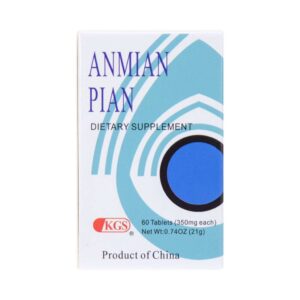 An Mian Pian
Starting at $6.45
Add to CartSelect options
This product has multiple variants. The options may be chosen on the product page
An Mian Pian
Starting at $6.45
Add to CartSelect options
This product has multiple variants. The options may be chosen on the product page
-
 Plum Flower – Six Gentlemen Plus Teapills (Xiang Sha Liu Zi Wan)
$22.73
Plum Flower – Six Gentlemen Plus Teapills (Xiang Sha Liu Zi Wan)
$22.73 $29.80Add to CartAdd to cart
Chrysanthemum ( ju hua ) has properties to clear heat, relieve fevers, improve headaches, and clear red eyes
Chrysanthemum (Ju hua) is the pale-yellow bud of the chrysanthemum flower. It may look feeble, but it can pack a punch. Chrysanthemum is a strong heat-clearer which means it’s great for heat, redness, and irritation. It works specifically on the Liver system and the eyes to reduce allergies, red and itchy eyes, and headaches caused by irritability. It’s also a key ingredient in many natural cold and flu remedies.
Chrysanthemum products at Best Chinese Medicines
Chrysanthemum is found in several cold and flu formulas, like the go-to Gan Mao Ling. Because of its strong effect on the eyes, this flower is found in several eye formulas as well, such as Qi Ju Di Huang Wan and Ming Mu Di Huang Wan. These formulas both treat dry, painful eyes, pressure behind the eyes, blurry vision, and eye fatigue.
Honeysuckle (jin yin hua) has properties to clear heat and toxicity
Honeysuckle (jin yin hua) is a cooling, sweet flower that is most often used to cool excess heat. This herb targets the Lung system to treat inflammatory issues like bronchitis, colds, and sore throats with its antiviral and antibacterial properties. Honeysuckle can also be used in formulas for angry skin conditions like dermatitis.
Honeysuckle products at Best Chinese Medicine
The most famous formula that contains Honeysuckle is Yin Chiao Chieh Tu Pian (also called Yin Qiao). These formulas are both used for what acupuncturists call “wind heat.” This is a cold-like condition where a burning sore throat is one of the main symptoms. When building your herbal medicinal cabinet, Yin Qiao is a must-have!
Magnolia (xin yi hua) has properties to warm cold, clear nasal passages and eliminates phlegm
Magnolia (xin yi hua) is warm and spicy which helps it attack colds and chills at their onset. The special power of magnolia is to unblock the nasal passages when we suffer from sinus congestion or sinus headaches. Magnolia is often included in general formulas that treat early-onset colds, as well as sinus-clearing formulas.
Magnolia products at Best Chinese Medicines
Best Chinese Medicine carries a few products that use magnolia flower. The namesake Xin Yi Wan is used for allergies and acute sinus headaches. Bi Yan Tang is used for the regular cold with nasal discharge, stuffy nose, chest congestion, chills, and headache.
-
 Plum Flower – Bi Yan Pian
Starting at $18.93
Add to CartSelect options
This product has multiple variants. The options may be chosen on the product page
Plum Flower – Bi Yan Pian
Starting at $18.93
Add to CartSelect options
This product has multiple variants. The options may be chosen on the product page
-
 Plum Flower – Magnolia Flower Teapills (Xin Yi Wan)
$20.13
Plum Flower – Magnolia Flower Teapills (Xin Yi Wan)
$20.13 $26.50Add to CartAdd to cart
Safflower (hong hua) has properties to increase circulation and reduce pain
Safflower (hong hua) is a bright and beautiful red flower that creates the quintessential tint in some Chinese herbal teas. Naturally, the main action of this crimson flower is improving blood circulation. Safflower is used in formulas to help increase the flow of blood, relieve pain, reduce swelling, and encourage healthy blood formation. Safflower is most commonly used in menstrual issues like amenorrhea, chest pain, dermatological issues, injuries, and dizziness.
Safflower products at Best Chinese Medicines
Safflower is a common ingredient in formulas that treat menstrual disorders, including Calm in the Sea of Life (Tong Jing Wan). This is an excellent formula for those who have painful or clotted periods. Another formula, Jie Gu Die Shang Wan (The Great Mender), is a Chinese herbal formula that moves blood and speeds up the recovery of minor injuries. It helps to relieve pain and treats sprains, strains, and bruises.
Violet (zi hua di ding) has properties to clear heat and reduce toxicity
The violet (zi hua di ding) is a dainty flower with blue-purple petals. “Zi” even means purple – the flower is named for it’s beautiful color in Chinese just as it is in English! This cool deep color also showcases the flower’s ability to cool heat and soothe the body. Violet is often used in formulas that reduce excess heat, inflammation, or swelling such as with sores and abscesses.
Violet products at Best Chinese Medicines
While violet was more popularly used in the times of mumps and scrofula, today it is reserved for more mild skin conditions like acne.
At Best Chinese Medicines, we carry Margarite Acne Pills, the most commonly used over-the-counter herbal acne remedy.
Have a Happy Herbal Valentine’s Day
Flowers have much more to offer us than their beauty. In some cases, flowers can heal our infections, reduce inflammation, enhance our circulation, nourish our eyes, and even make us more beautiful.
This Valentine’s Day, while you are picking out a vibrant bouquet for a loved one, remember to pamper yourself too. Invest in your health this Valentine’s Day with an herbal medicine formula that will help you heal from the root – and maybe an extra bunch of roses for yourself!
Share This
Table of Contents
- The Use of Flowers in Chinese Medicine
- Chinese Medicinal Flowers
- Rose (mei gui hua) has properties to calm, relieve stress and enhance circulation.
- Chrysanthemum ( ju hua ) has properties to clear heat, relieve fevers, improve headaches, and clear red eyes
- Honeysuckle (jin yin hua) has properties to clear heat and toxicity
- Magnolia (xin yi hua) has properties to warm cold, clear nasal passages and eliminates phlegm
- Safflower (hong hua) has properties to increase circulation and reduce pain
- Violet (zi hua di ding) has properties to clear heat and reduce toxicity
- Have a Happy Herbal Valentine’s Day
About the Author
Blog Categories
- Adaptogen Articles (8)
- Brain Health Articles (9)
- Chinese Medicine Basics Articles (13)
- Chinese Medicine for Pain Articles (15)
- Chinese Medicine for Pets Articles (3)
- Chinese Medicine for Skin Conditions Articles (6)
- Chinese Medicine Formula Articles (6)
- Chinese Medicine Sleep Articles (4)
- Conditions & Concerns Articles (24)
- Digestive Issues (5)
- Eating for the Seasons (2)
- Health & Lifestyle Articles (17)
- Heart Health Articles (4)
- In the News (1)
- Medicinal Mushrooms Articles (7)
- Men's Health Articles (8)
- Scholarships (5)
- Uncategorized Articles (9)
- Weight Loss, Diet & Obesity Articles (5)
- Women's Health Articles (10)
Articles Related To A Very Herbal Valentines Day – Medicinal Flowers in Chinese Herbal Medicine
-
Are you wondering which form of a Chinese herbal formula is right for you? Let’s explore the various types of Chinese herbal medicine to help you decide. Those new to Chinese herbal medicine often ask why there are so many different types of preparations, like pills, tablets, tinctures, and decoctions. What’s the difference? And which…
-
How to Effectively Use Teapills for Your Health Teapills, a staple in traditional Chinese medicine (TCM), offer a simple way to incorporate powerful herbal remedies into your wellness routine. These tiny, round, herbal capsules are pre-prepared, easy to take, and packed with centuries-old wisdom. If you’re looking to benefit from the healing power of TCM,…
-
How Chinese Medicine treats dysfunction, disease, health and wellbeing is complementary to Western Medicine Even at a glance, Chinese Medicine is quite different from Western Medicine. Earthy herbs are favored over laboratory compounds, mind and body are considered one, and diet and lifestyle take center stage. Chinese Medicine is an ancient system developed thousands of…
-
What do we mean by the Spleen: According to Traditional Chinese Medicine theory, the energetic organ system responsible for what we in modern times call “digestion” is the Spleen. This is not to be confused with the Western medical definition of the spleen as the organ that, among other things, makes antibodies, removes old red…
-
In Traditional Chinese Medicine, each season is more than just a change in weather; it’s an opportunity to align our bodies and live in tune with nature. With late summer – the “fifth season” of TCM – upon us, now is the perfect time to rethink what we put on our plates and eat in…


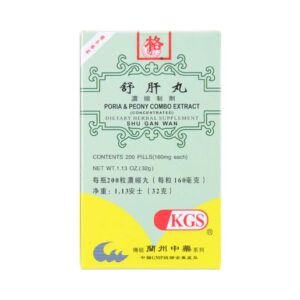 Shu Gan Wan – Poria And Peony Combo Extract – Kingsway (KGS) Brand
Shu Gan Wan – Poria And Peony Combo Extract – Kingsway (KGS) Brand
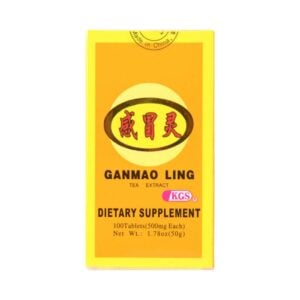 Ganmao Ling (Gan Mao Ling) – Kingsway (KGS) Brand
Ganmao Ling (Gan Mao Ling) – Kingsway (KGS) Brand
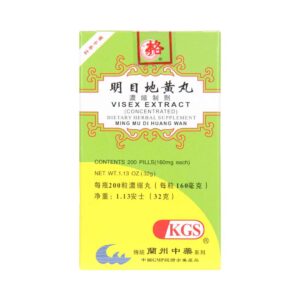 Ming Mu Di Huang Wan – Visex Extract – Kingsway (KGS) Brand
Ming Mu Di Huang Wan – Visex Extract – Kingsway (KGS) Brand
 Qi Ju Di Huang Wan – Lycii And Chrysanthemum Extract – Kingsway (KGS) Brand
Qi Ju Di Huang Wan – Lycii And Chrysanthemum Extract – Kingsway (KGS) Brand
 Yin Chiao (Yin Qiao Jie Du Pian) – by Sing-lin – (OUT OF STOCK)
Yin Chiao (Yin Qiao Jie Du Pian) – by Sing-lin – (OUT OF STOCK)
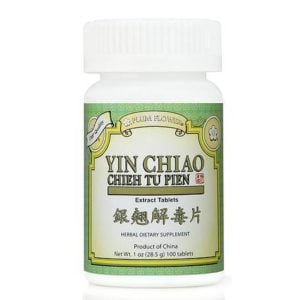 Plum Flower – Yin Chiao Chieh Tu Pien (Yin Qiao)
Plum Flower – Yin Chiao Chieh Tu Pien (Yin Qiao)
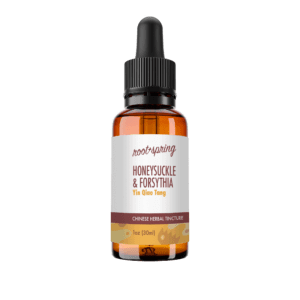 Yin Qiao Tang (Honeysuckle and Forsythia) – Liquid Extract (Tincture)
Yin Qiao Tang (Honeysuckle and Forsythia) – Liquid Extract (Tincture)
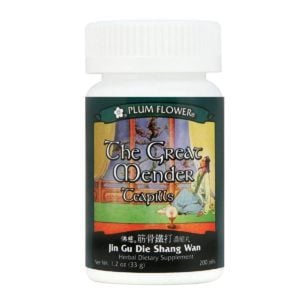 Plum Flower – The Great Mender (Jin Gu Die Shang Wan)
Plum Flower – The Great Mender (Jin Gu Die Shang Wan)
 Plum Flower – Calm In The Sea Of Life (Tong Jing Wan)
Plum Flower – Calm In The Sea Of Life (Tong Jing Wan)
 Plum Flower – Margarite Acne Pills
Plum Flower – Margarite Acne Pills